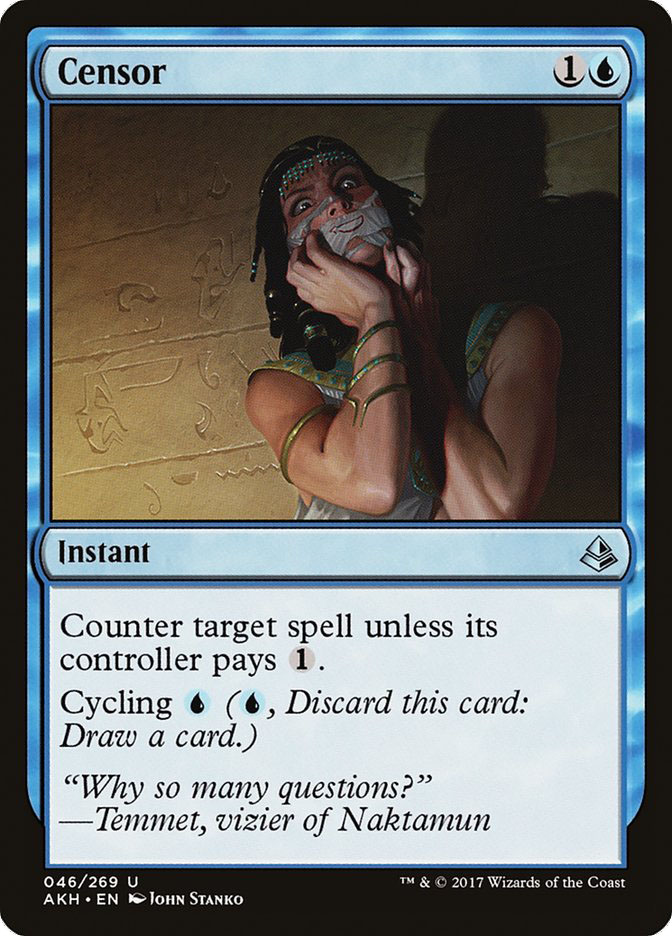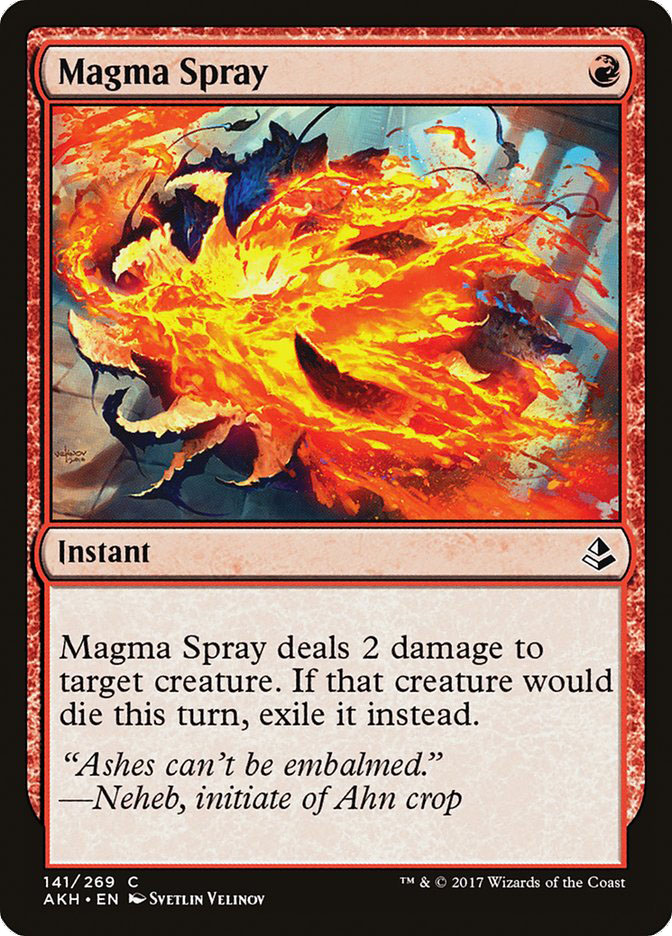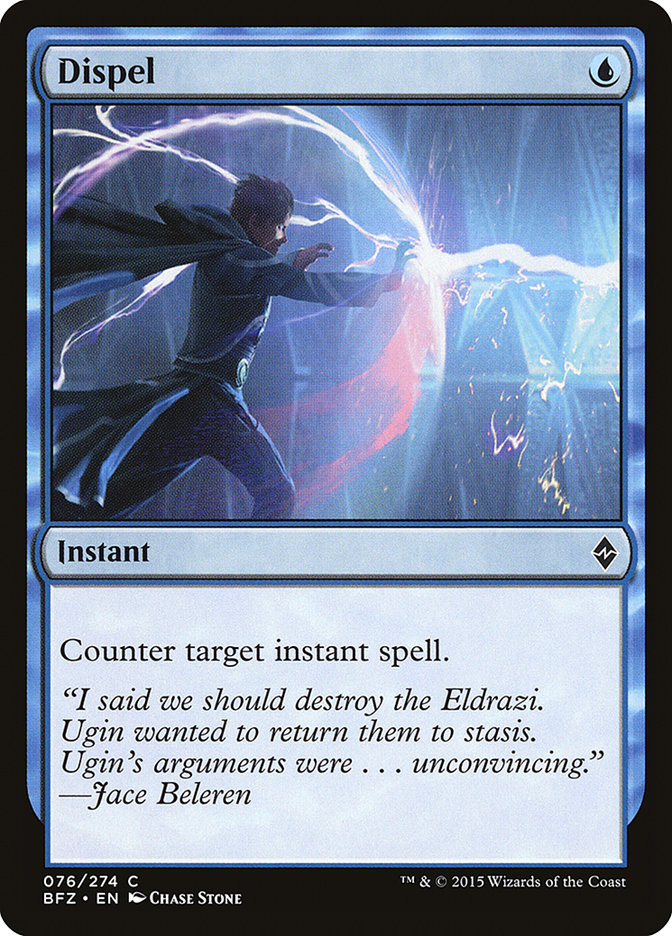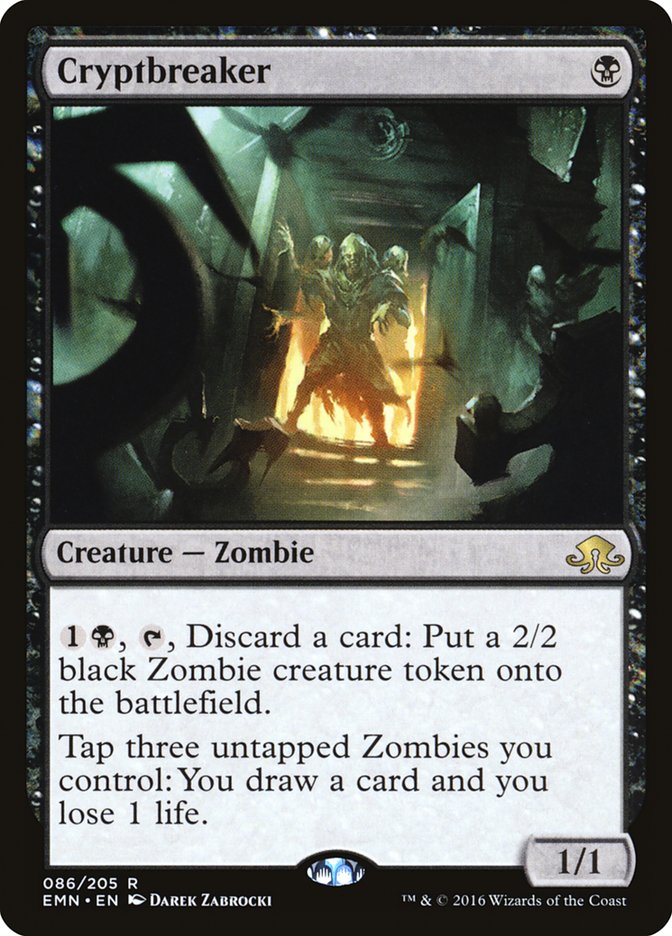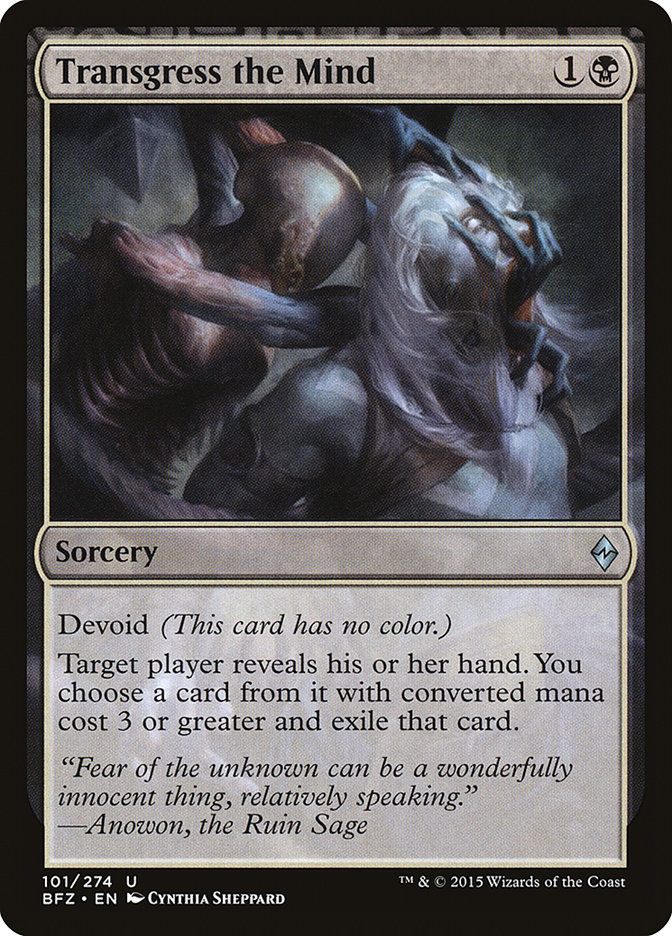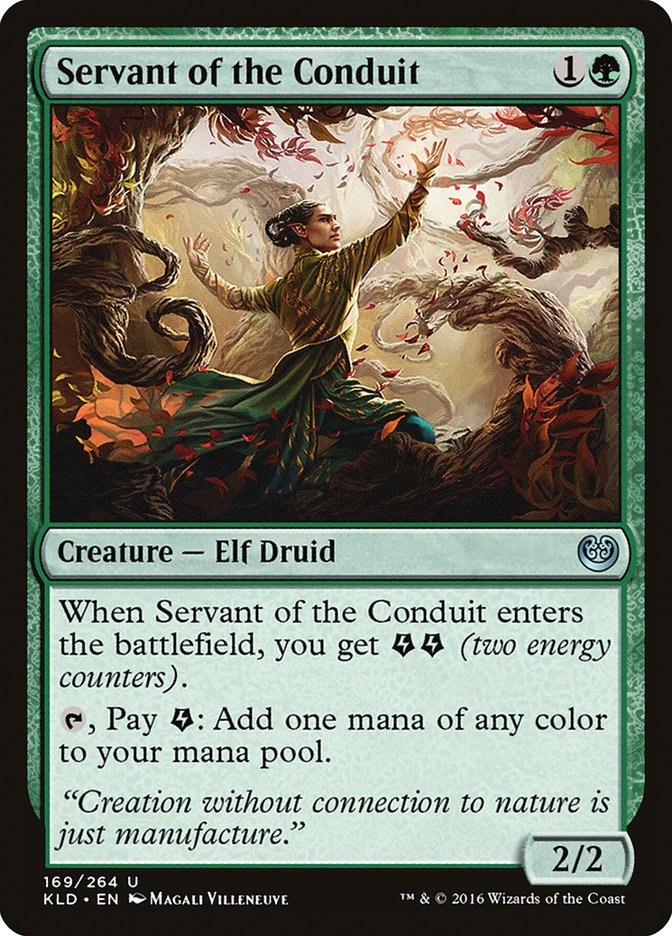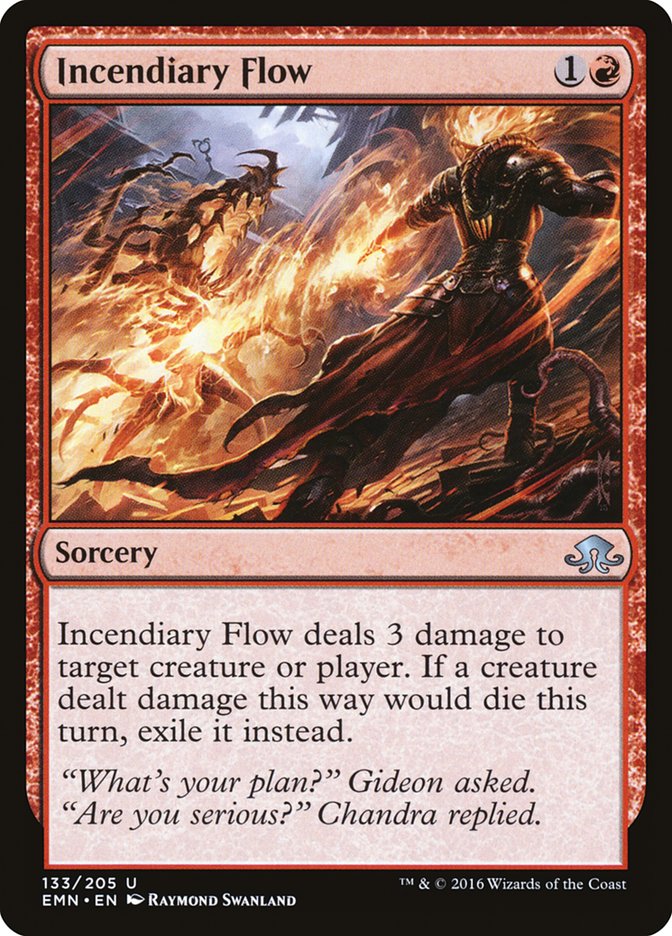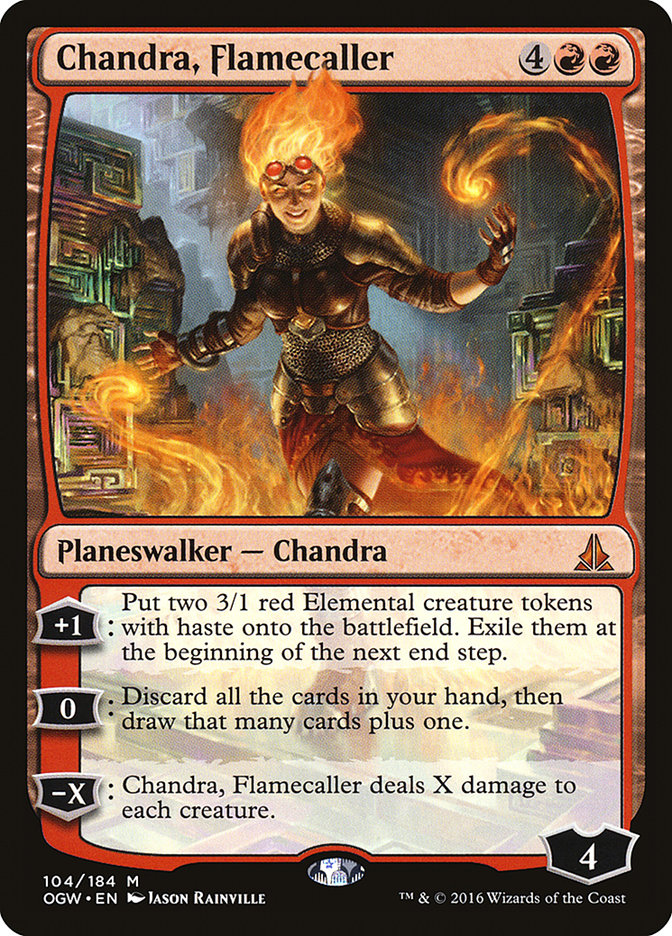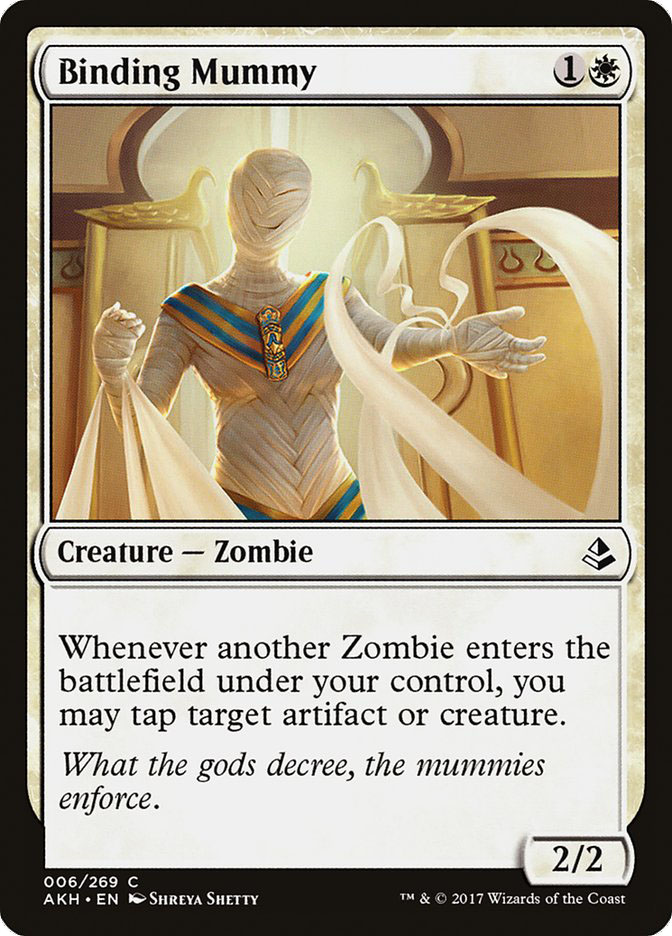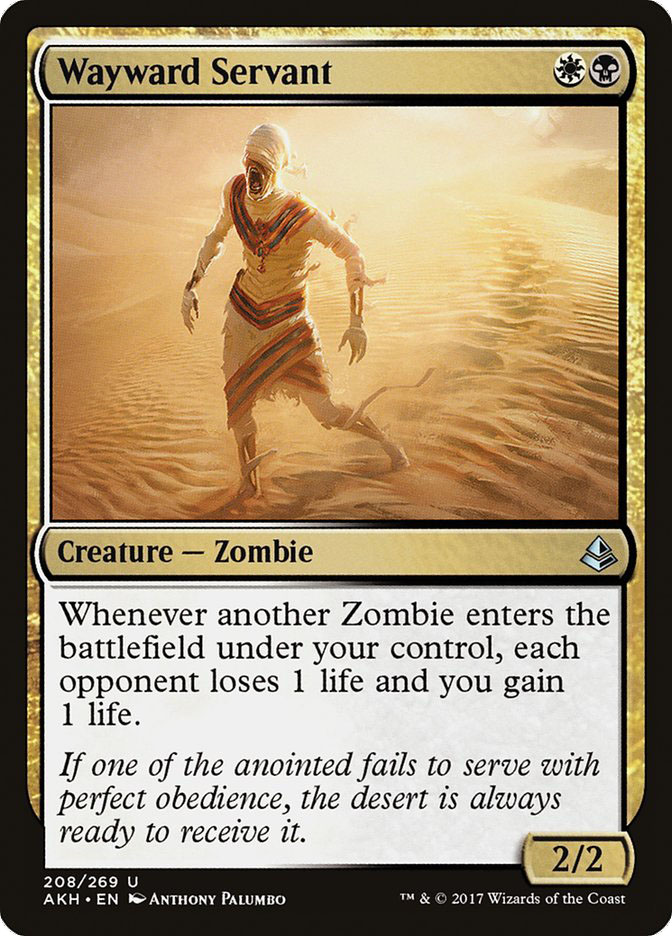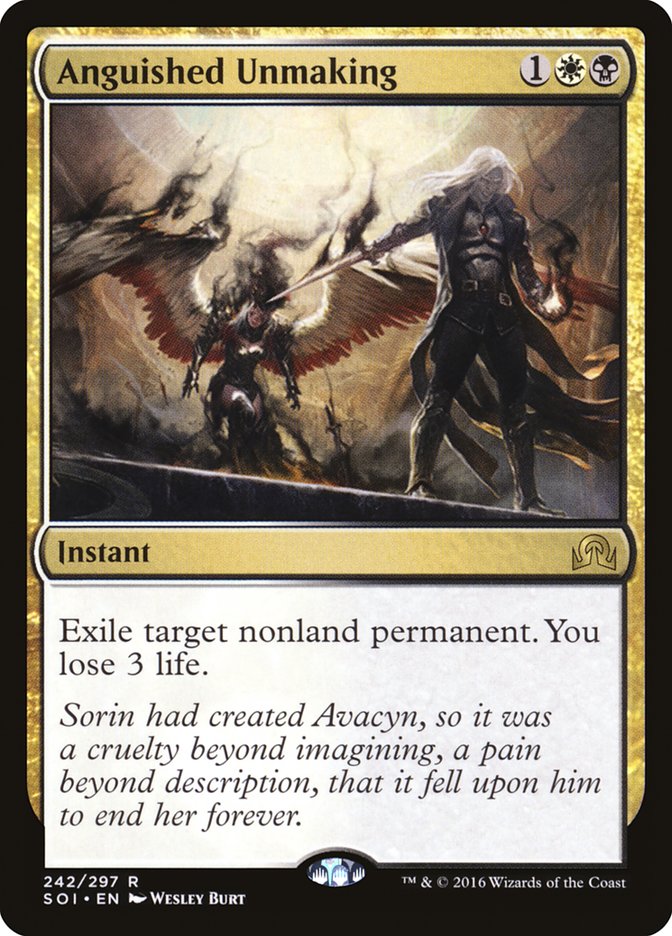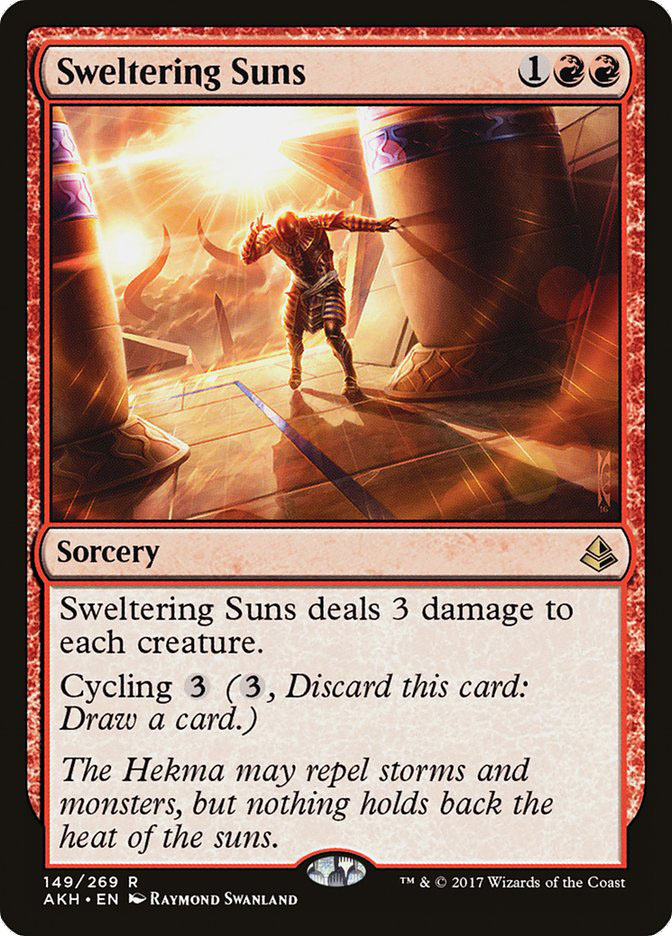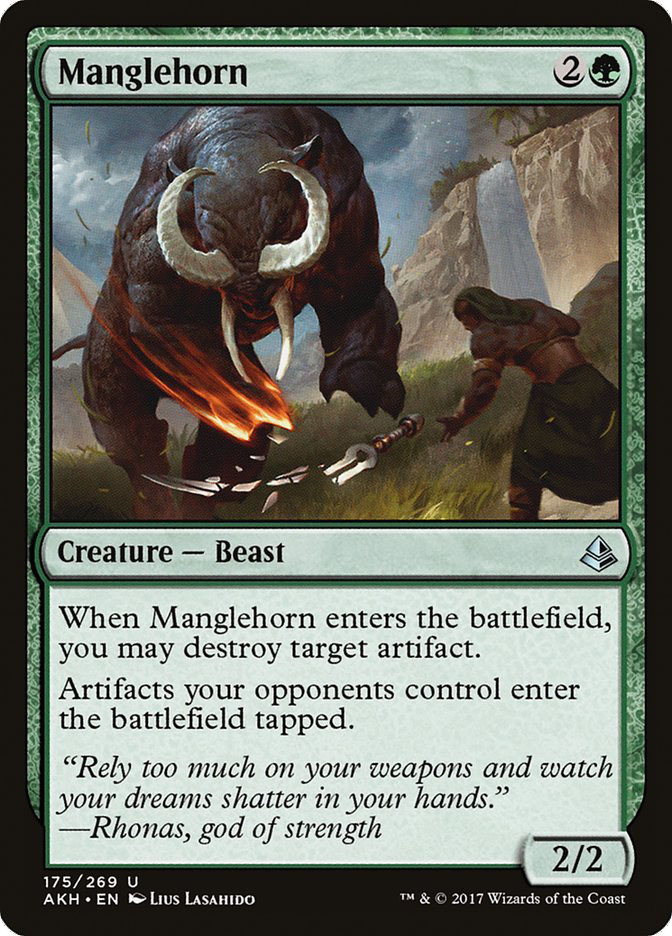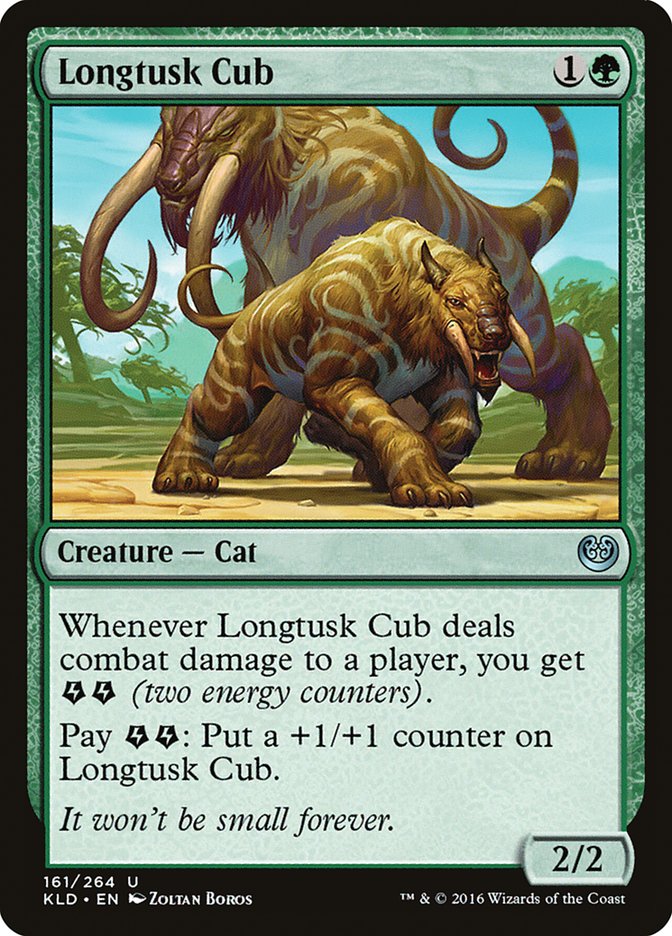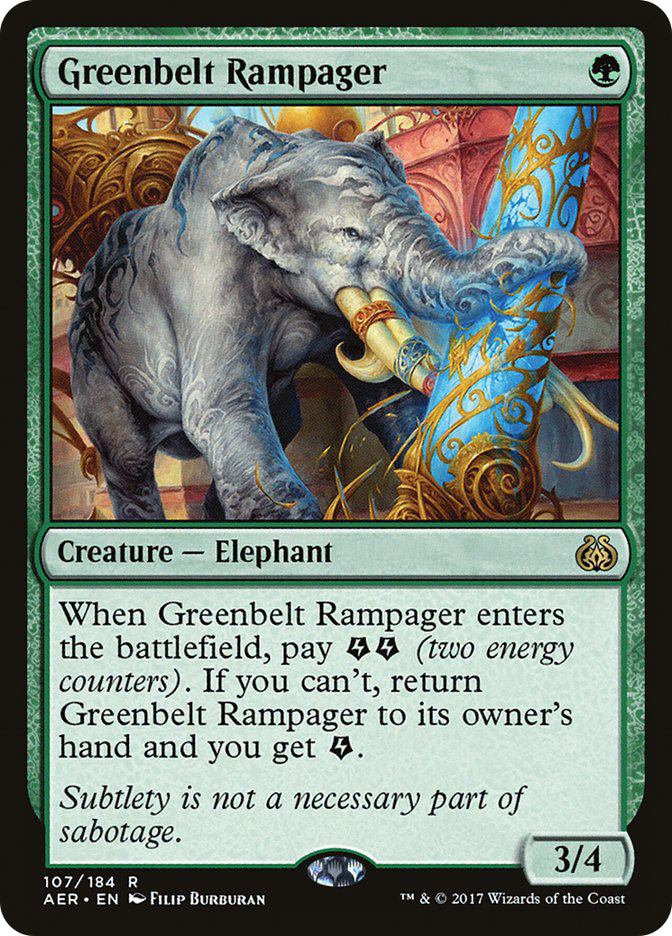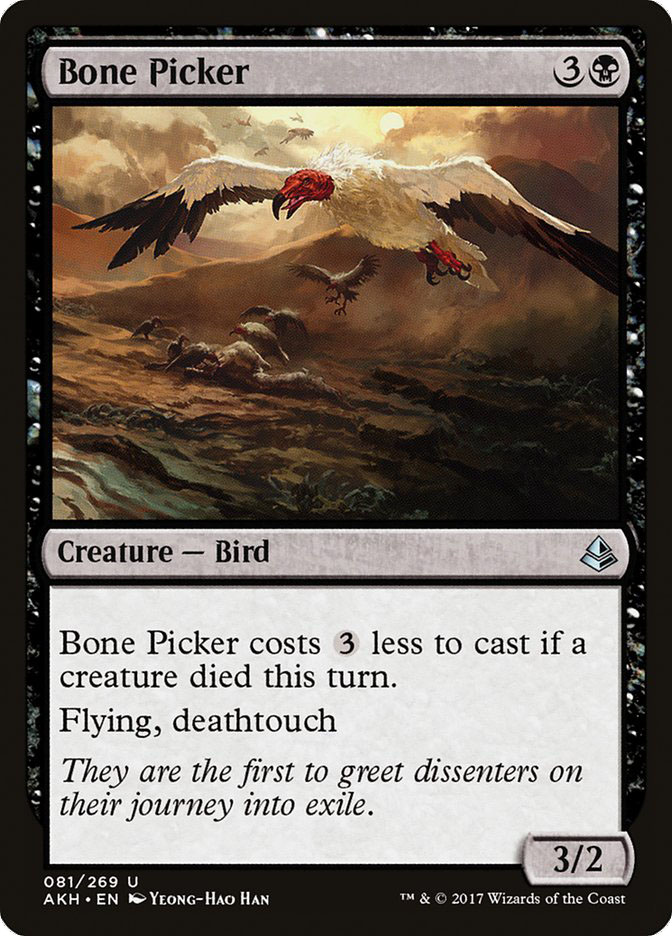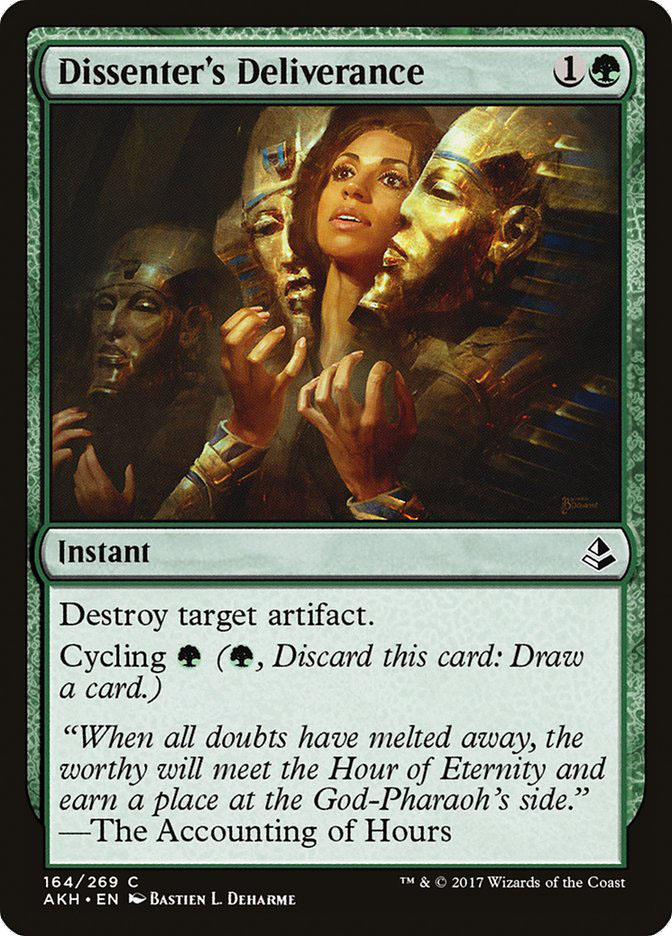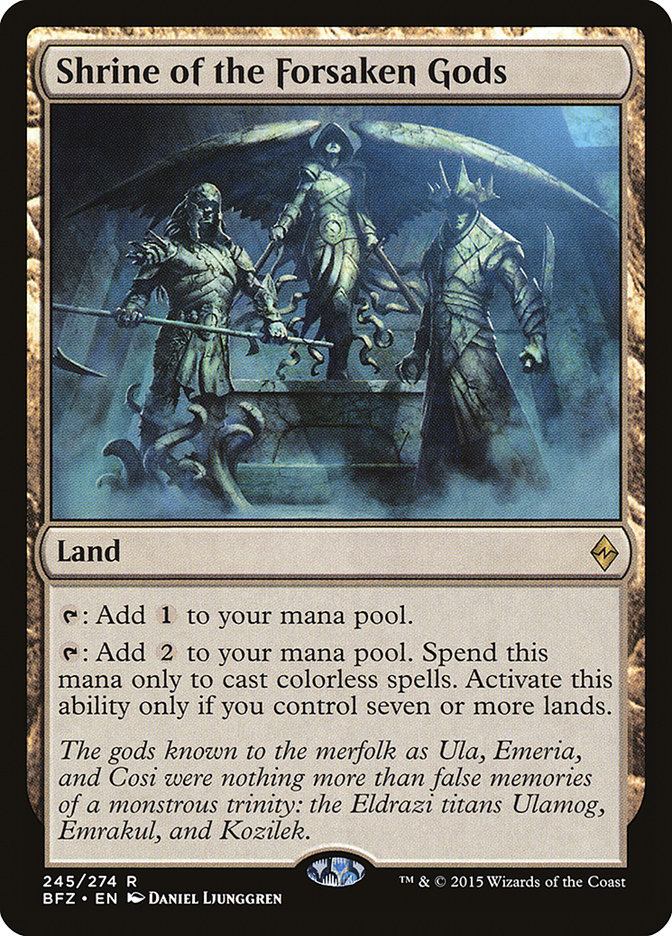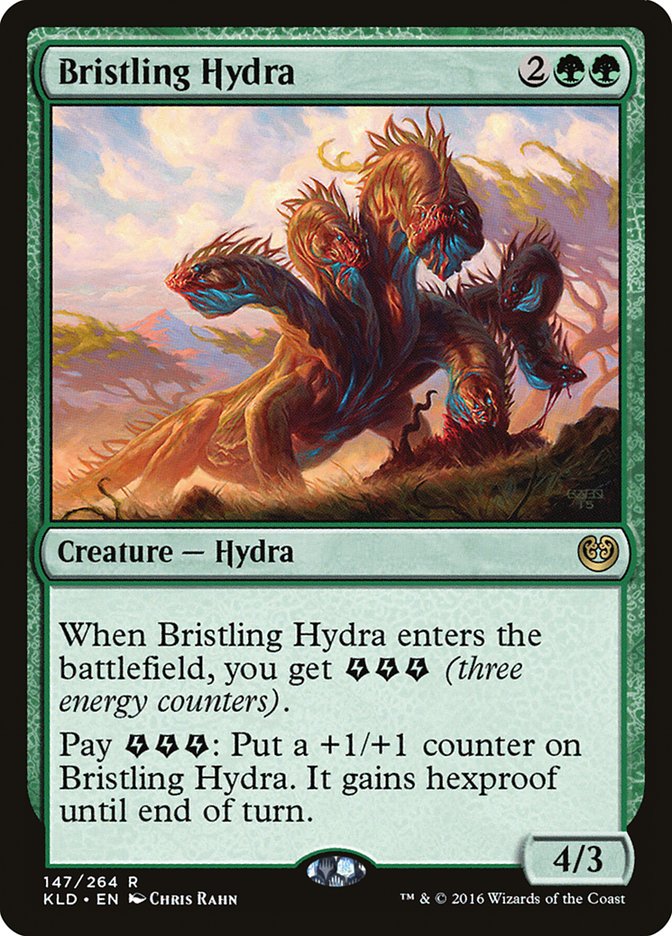Pro Tour Amonkhet is a wrap and what a tournament it was!
Ignoring the fact that a long-time friend, Gerry Thompson, won the
tournament, gone are the days of Mardu Vehicles – at least for now, though
I think Gideon might have something to say about that – and here are the
days of Temur Aetherworks and Zombies. It’s a welcome change from what we
all feared the Pro Tour might look like after seeing
the results of SCG Atlanta
just two weeks ago, now isn’t it?
Don’t get it twisted though. Mardu Vehicles had heavy representation in
Nashville, with it being 26% of the Standard metgame. Fortunately for all
of us, however, the many astute minds that make up the Pro Tour scene went
deep into their bag of tricks to find plenty of success without Heart of
Kiran, Toolcraft Exemplar, and Unlicensed Disintegration.
And by deep into their bag of tricks, I, of course, mean found a great
shell around a broken artifact.
Creatures (12)
Lands (14)
Spells (34)

This is the first of many Temur Aetherworks decklists I’ll be going over
today, as four copies of the deck made the Top 8 at Pro Tour Amonkhet. This one did the worst of them.
It’s a rough life for the five-time Pro Tour Top 8 competitor sometimes, ya
know?
All kidding aside, it doesn’t surprise me to see EFro playing such a great
build of such a powerful deck. In a brief interview with Brian
David-Marshall, EFro said nonchalantly that he and his team had the best
deck in the tournament. And while Mono-Black Zombies may have brought home
the title, it’s hard to argue with EFro’s assertion that his build of Temur
Aetherworks isn’t the best deck to come out of Nashville.
First and foremost, he’s got the entire shell of a good Temur Aetherworks
deck in all the right numbers – 4 Rogue Refiner, 3 Whirler Virtuoso, 4
Attune with Aether, 4 Harnessed Lightning, 4 Woodweaver’s Puzzleknot, and 4
Glimmer of Genius. Those numbers may seem obvious at first, but some
players always try to find room to skimp on those relevant cards, whereas
Eric has certainly realized their importance.
Ignoring what I feel are the obvious cards, EFro does something in this Top
8 that only one other Temur Aetherworks player, Marc Tobiasch, did: play
four copies of Ulamog the Ceaseless Hunger. Look, I get it! You don’t want
to draw a copy of Ulamog in most circumstances since it’s a dead draw
unless the game goes long and it’s one less Ulamog for your Aetherworks
Marvel to hit if you draw one. My counterargument to that would be simple:
If you hit Ulamog, the Ceaseless Hunger with Aetherworks Marvel, you
more or less win the game, so you want to give yourself every
opportunity to do just that.
Some people played three. EFro and Marc played four. I’m not the type of
player to really sleeve up an Aetherworks Marvel deck. It’s just not my
style. But if I were, I would play four copies of Ulamog so I can try to
spin the wheel and hit the jackpot as often as possible. Additionally, If
you watched coverage of Pro Tour Amonkhet over the weekend, wasn’t the
narrative always the same?
“If [insert name here] hits Ulamog, this game is over!”
Or…
“It looks like the only way [nsert name here] can come back is if their
Aetherworks Marvel finds an Ulamog.
These three cards are more or less the flex spots of Temur Aetherworks.
Some players opted for a more aggressive approach with Servant of the
Conduit. Others leaned towards a more midrange approach with Chandra, Torch
of Defiance or Chandra, Flamecaller. Some even opted to pre-sideboard for
the mirror with maindeck copies of Dissenter’s Deliverance and Negate. I’m not
sure one approach is more right than the other. I will say that with
Mono-Black Zombies winning the Pro Tour and Servant of the Conduit often
finding its way into Aetherworks Marvel decks, I do love having access to
some number of Magma Sprays in the maindeck.
As far as Censor and Torrential Gearhulk go, I could take em or leave em.
They’re both incredibly low-risk, high-reward cards, but I think their
inclusions are more metagame-dependent.
As is common with a deck that has access to green mana in Standard, you’re
going to find copies of Tireless Tracker in EFro’s 75. The card acts more
or less like a Planeswalker in most situations, as once it arrives, it
creates a subgame around itself of “You better answer this immediately or
you’re probably dead.”
Negate and Dispel shouldn’t really need much of an explanation.
Counterspells are a big reason to be Temur Aetherworks instead of some
other obscure color combination that doesn’t involve blue.
Creatures (24)
- 4 Relentless Dead
- 4 Diregraf Colossus
- 4 Cryptbreaker
- 4 Metallic Mimic
- 4 Lord of the Accursed
- 4 Dread Wanderer
Lands (24)
- 22 Swamp
- 2 Westvale Abbey
Spells (12)

Few people in the history of Magic have worked harder at becoming good at
it than Christian Calcano. Known as The Calculator, Calcano’s Top 8
interview with Brian David-Marshall will not soon be forgotten.
So what makes his Mono-Black Zombies deck so special? Truthfully? Nothing!
One of my favorite things about this Pro Tour is that the breakout deck
looks a lot more like a precon than some masterpiece built by Sam Black or
Zvi Mowshowitz. And you wanna know something?
That’s totally fine!
Not every pile of 75 cards has to be some deckbuilding masterpiece. I think
the real brilliance here is realizing that in a format full of Battle
lands, Enemy creature-cands, Kaladesh Fastlands, and Amonkhet Cycling lands that one can actually find success with a
deck that has 22 freaking Swamps in it!
You want the breakdown of Mono-Black Zombies? That’s simple. Cryptbreaker
is busted.
Cryptbreaker is far and away the best card in any build of Zombies, but the
one thing it was always lacking was support. In Amonkhet, it was
given just enough with Lord of the Accursed, Liliana’s Mastery, and Dread
Wanderer to turn it from a card collecting dust in binders to a card that’s
winning people thousands of dollars.
Why? Let’s break it down:
1B, T: Discard a card: Create a 2/2 black Zombie creature token.
This first ability may not seem like much at first. And yes, I get the
synergies with Dread Wanderer (you can get it back!), Diregraf Colossus
(discarding Zombies makes that thing huge!), and Scrapheap Scrounger (you
can also get that back!). Those are all well and good. I don’t care about
that. I care about this:
If my opening hand has a Cryptbreaker and doesn’t contain a two-drop, this
line of text means that I still have a two-drop.
Look. I’ve won a lot of matches with a lot of crappy aggro decks over the
years. I’ve also lost a lot of matches with crappy aggro decks over the
years.
You know the best way to win with crappy aggro decks? One-drop. Two-drop.
Three-drop or removal spell.
You know the easiest way to lose with crappy aggro decks? Missing your
two-drop and not curving out.
Cryptbreaker is an aggro deck’s dream, because by drawing one, you have the
one-drop and two-drop on curve in a single card. Throw in all the
synergies above that go along with it, and you’ve found the best card in
the entire deck.
Tap three untapped Zombies you control: You draw a card and you lose 1
life.
You know what aggro decks generally don’t get to do? Draw cards. Their
advantage comes from the fact that they get to use their cards quicker than
their opponent and also that since they play less lands than their
opponent, they are likely to draw more spells. As we all know, when an
aggro deck floods out, it’s often times game over.
Well not only does Cryptbeaker mitigate flood with its first ability but
its first ability works with its second ability to ensure that you will
continue to have action. That means we’re looking at an aggressive deck
that can play a short game with some Zombie beatdowns but also doesn’t mind
playing a longer game because it can draw enough cards to keep up.
I know Cryptbreaker may not look like much. It isn’t as big as Diregraf
Colossus. It isn’t as new as Liliana’s Mastery. And it certainly isn’t as
expensive as Relentless Dead. But guess what? It’s the reason people
gravitated towards Zombie strategies in the first place, and it’s the
reason the deck is any good to begin with.
There’s nothing too exciting about Calcano’s sideboard. One of the
downsides of playing a mono-colored strategy is the lack of sideboard
options available. Whereas EFro has access to Tireless Tracker, Negate, and
Radiant Flames, The Calculator’s sideboard is full of a mishmash of
mediocre black cards highlighted by Transgress the Mind, the best way to
try and snag an Aetherworks Marvel.
Moving forward, I imagine Calcano will move his two copies of Liliana’s
Mastery from the sideboard to the maindeck, as Zombies will be popular in
the short term.
Creatures (19)
- 4 Ulamog, the Ceaseless Hunger
- 2 Tireless Tracker
- 4 Whirler Virtuoso
- 4 Servant of the Conduit
- 4 Rogue Refiner
- 1 Shielded Aether Thief
Planeswalkers (3)
Lands (14)
Spells (24)

Ah yes. Another Temur Aetherworks deck. But this time, we have a much more
aggressive approach from Marc Tobiasch. I am, of course, using the term
aggressive rather fast and loose here, as there’s nothing terribly
aggressive about any Aetherworks Marvel deck in Standard. That said, if you
want to be a bit quicker to the battlefield when playing an Aetherworks
Marvel deck, Servant of the Conduit and Chandra, Torch of Defiance are the
way to do it.
With four copies of Servant of the Conduit, four copies of Aetherworks
Marvel, and three copies of Chandra, Torch of Defiance, Marc’s take on
Temur Aetherworks allows him to be quicker to the battlefield by playing a
four-mana spell ahead of schedule. The upside of that, of course, is that
you’re potentially doing more powerful things than your opponent faster
than they can keep up with. The downside of that, unfortunately, is that if
your opponent is able to handle your speed with timely counterspells or
removal, you’ve still got Servant of the Conduit to draw later in the game
and there’s a real chance they don’t care about Chandra, Torch of Defiance
in the least. Zombies, as an example, can easily overcome Chandra once one
of its various engines is online and other Temur Aetherworks decks won’t
care about your Chandra all that much if they have a Marvel of their own
spinning and winning (
thanks Clyde).
These three reds do line up fairly well against Zombies, as Magma Spray and
Incendiary Flow exiling matters quite a bit, and Chandra, Flamecaller being
able to deal four damage to everything is, oddly enough, very important
because game states do exist where a Zombies player has two copies of Lord
of the Accursed, two copies of Liliana’s Mastery, or one of each which, in
turn, negates Radiant Flames and/or Sweltering Suns.
Creatures (22)
- 4 Diregraf Colossus
- 4 Cryptbreaker
- 4 Lord of the Accursed
- 4 Dread Wanderer
- 4 Wayward Servant
- 2 Binding Mummy
Lands (24)
Spells (14)

Known as a Limited master, and rightly so, Chris Fennell’s Constructed
chops have always been a bit understated. I’ve known Chris long enough to
know that he’s an elite Limited player, but Limited skills do translate
over to Constructed, and at the end of the day, Fennell just knows how to
play the game of Magic and there’s really no substitute for that.
Here you’ll find another Zombie deck, but instead of going the mono-colored
route, Fennell opted to work in some white cards to not only raise card
quality but also to breathe some life into his sideboard. I’ll get to the
fifteen extra cards in just a moment, but first I’d like to highlight what
white cards Chris is bringing to his maindeck:
My version of highlighting these three cards is having my editor place
large images of them above this paragraph and then copy + pasting what
Gerry Thompson said about them on Friday
in his article
before he won the f’n Pro Tour:
Splashing in Zombies is a consideration, but one that I don’t think is
worth it. If you wanted to splash, it would be to improve the weak
sideboard of Mono-Black. Since you’re mostly trying to curve up to
five, playing lands that enter the battlefield tapped can be dangerous,
but it could be worth it depending on what you pick up. Additionally,
Zombies could use a creature-land to insulate themselves against
sweepers, even if it’s a small help.
I’m really not a fan of the B/W lists that have been running around, as
nickel and diming people out with
[card name="Wayward Servant"]Wayward Servant
[/card]
isn’t what the deck is about. Making them not be able to block with
[card name="Binding Mummy"]Binding Mummy
[/card]
is also kind of silly, as you mostly invalidate their blockers by
pumping your team anyway.
To me, it’s simple. Wayward Servant and Binding Mummy aren’t going to win
you more games than having four Shambling Vents enter the battlefield
tapped or having six Plains color screwing you are going to lose you. The
upside just isn’t there to me, and Gerry articulated it better than I
could.
To see this card splashed into the sideboard of an aggressive deck shows a
few things: 1.) We’ve come a pretty long way from Gideon’s dominance. 2.)
Not everything needs to be banned.
There were times when Fennell was on camera this weekend where Gideon
looked truly fantastic. That really comes as no surprise. It’s Gideon. When
you cast it on turn 4 on the play, you win a very high percentage of the
time. My question is, and will continue to be:
“Are the sacrifices of not playing a 22 Swamp all untapped land manabase
worth it to play arguably the most powerful card in Standard?”
My answer is no. But I didn’t just Top 8 a Pro Tour. Chris did. And he
didn’t just Top 8 this Pro Tour. He destroyed it. Sure, he didn’t win the
tournament. But that doesn’t take away from the fact that rounds 1 through
16 were the Chris Fennell Show (not to be confused with
The Kevin Owens Show
). And during the Chris Fennell Show (again, not to be confused with
The Kevin Owens Show
), Gideon showed up a lot and looked damn good when it did.
So the choice that you have to make in your next tournament is “Do
you want to splash for Gideon or not?”
Creatures (15)
Planeswalkers (4)
Lands (14)
Spells (27)
- 6 Forest
- 2 Mountain
- 1 Island
- 4 Aetherworks Marvel
- 4 Woodweaver's Puzzleknot
- 4 Harnessed Lightning
- 4 Attune with Aether
- 2 Aether Meltdown
Sideboard

Here’s our third Temur Aetherworks deck! But this one, my friends, is a lot
different than EFro’s and Marc’s as Martin Mueller has four (yes, four!)
maindeck copies of Chandra, Flamecaller.
As stated earlier, I believe the rationale behind playing Chandra,
Flamecaller is that it’s a good card against Zombies to clear their
battlefield and reset things. However, when you’re playing four of them
like Mueller is, you’re doing so because you believe it’s a good hit off of
Aetherworks Marvel. And truthfully, it’s pretty hard to argue otherwise.
All of Chandra’s modes are powerful, and if she shows up ahead of schedule,
she’s more impactful than her four-mana counterpart, the Torch of Defiance,
a card that we saw multiple copies of in Marc Tobiasch’s maindeck.
Perhaps it’s time for everyone to make the switch from the medium-sized
to Chandra to large no-messing-around-sized Chandra.
We’ve seen a few copies of Radiant Flames in Temur Aetherworks sideboards
thus far, but this is the first instance of Sweltering Suns. And while
Radiant Flames and Sweltering Suns serve a similar role – slowing down
Zombies and being an answer to Whirler Virtuoso – Radiant Flames is likely
easier to cast than Sweltering Suns because having access to two red mana
in a three-color deck isn’t as easy as one may think. That’s why you’ll
find two copies of Game Trail, a card generally not found in Temur
Aetherworks, in Mueller’s list.
Past that, Manglehorn is a great mirror breaker at either killing an
Aetherworks Marvel or delaying one that shows up late. Throw in that it
kills Heart of Kiran and various other cards out of Mardu Vehicles and this
new take on Viridian Shaman will likely be a staple in Temur Aetherworks
sideboards moving forward.
Creatures (27)
- 4 Longtusk Cub
- 4 Greenbelt Rampager
- 4 Winding Constrictor
- 4 Rishkar, Peema Renegade
- 3 Glint-Sleeve Siphoner
- 4 Walking Ballista
- 4 Bone Picker
Lands (20)
Spells (13)

As far as decks I didn’t expect to do well in Nashville go, all variants of
B/G were on the top of my list. Not only do most B/G decks do poorly
against Mardu Vehicle’s sideboard plan of becoming a midrange deck based
around Planeswalkers, but B/G has never fared well against Aetherworks
Marvel strategies either. The printing of Dispossess certainly helps solve
the Aetherworks Marvel problem, but astute deck builders like those who
made the Top 8 in Nashville had backup plans in case a Dispossess took out
their legendary artifact.
As for solving the Mardu Vehicles sideboard plan? Simple! Kill them before
they get set up!
All of these three cards scream “I’m not interested in playing a long
game!” Greenbelt Rampager can come down as early as turn 2, Longtusk Cub in
combination with Winding Constrictor is an absurdly quick clock, and though
these may be the only Bone Pickers registered in the Constructed portion of
this tournament (that’s actually true, by the way!), Zombies and Temur
Aetherworks aren’t flush with answers for flying creatures.
I know Yukuhiro’s build of B/G Energy may look really strange – he doesn’t
have single copy of Verdurous Gearhulk in his 75! – but there’s two things
you should remember. One, Ken Yukuhiro is really good at Magic. Next, he
wouldn’t have chosen to play this deck at the Pro Tour if he wasn’t
confident about how it lined up in the metagame.
Normally I’d spend some time going over the sideboard, but it’s all pretty
obvious stuff. Tireless Tracker is a good card for grindy matchups,
Blossoming Defense is a great way to blow out people who are looking to
interact, and Manglehorn is good against artifacts. There’s really not much
else to note here besides the singleton Nissa, Vital Force, which is a nice
fun-of in case you get paired against another B/G deck, I guess.
Well done Ken Yukuhiro. You’re a much braver man than I.
Creatures (10)
Lands (22)
Spells (28)
- 1 Negate
- 1 Kozilek's Return
- 4 Aetherworks Marvel
- 4 Woodweaver's Puzzleknot
- 4 Harnessed Lightning
- 4 Attune with Aether
- 4 Glimmer of Genius
- 3 Dissenter's Deliverance
- 3 Censor
Sideboard

One day, Yuuya Watanabe is going to win a Pro Tour and we’re all going to
let out a collective “It’s about damn time!” Unfortunately for him, Pro
Tour Amonkhet wasn’t that Pro Tour, so he will have to continue
being one of the best players of all-time who still hasn’t gotten to hoist
that trophy just yet.
As for his take on Temur Aetherworks, it’s a lot different than the first
three builds due to three main cards:
Let’s start with the cycling Shatter shall we? Once Amonkhet was
released, I think we all knew that playtime was over for Heart of Kiran.
Between Dissenter’s Deliverance and Manglehorn, there was enough
maindeckable artifact removal that the 4/4 legendary vehicle could easily
be kept in check. But three copies of Dissenter’s Deliverance in the
maindeck of a Temur Aetherworks deck is a lot by anyone’s standards.
Except Yuuya’s, of course.
Again, it’s low risk and high reward, which is truthfully what all three of
these cards are about. Take the maindeck copy of Negate as an example. Yes,
there’s a chance that Yuuya gets paired against a deck that is mostly
creatures (like Yukuhiro’s B/G Energy deck), is getting beaten down by said
creatures, and has a dead Negate in his hand.
There’s also the other extreme, which is one where Watanabe’s opponent
plays a Heart of Kiran, Gideon, Ally of Zendikar, Aetherworks Marvel, or
Glimmer of Genius and Yuuya counters it with his maindeck counterspell. I
used the word extreme in the previous sentence sarcastically because as we
know by now, countering one of those spells game 1 was likely the norm for
Watanabe.
Last is the copy of Shrine of the Forsaken Gods. And before I type “low
risk and high reward” one more time, just note that casting an Ulamog, the
Ceaseless Hunger that’s been stuck in your hand for a while a turn before
your opponent expects you to is so powerful that I’d always play a miser’s
copy of Shrine of the Forsaken Gods in any Aetherworks Marvel deck I played
if I were bold enough to ever play one.
Truth be told, I’m not entirely sure what Bristling Hydra is doing here,
but that’s actually where some of its power may live. No one probably
expected to see the 4/3 out of the sideboard from Yuuya, but if I had to
take a stab at it, it’s to punish people who were trying to cheese Watanabe
out with Dispossess. They sideboard their removal out and their copies of
Dispossess in, and the Hall of Famer sidesteps that nonsense with a
difficult to answer 4/3 that only has plans of getting larger.
Yuuya’s too good not to have a Pro Tour title yet. It’s not a matter of if.
Only a matter of when.
Creatures (24)
- 4 Relentless Dead
- 4 Diregraf Colossus
- 4 Cryptbreaker
- 4 Metallic Mimic
- 4 Lord of the Accursed
- 4 Dread Wanderer
Lands (24)
- 22 Swamp
- 2 Westvale Abbey
Spells (12)

Secretly, I always had a feeling this day would come.
I met Gerry Thompson at Grand Prix Pittsburgh when I was seventeen. He was
better at Magic than me then, and he’s still better at Magic than me now.
The reasons for that are numerous, but if I had to pick one, I would go
with the following:
There are no sacred cows.
One of the many things I’ve learned in my fourteen years of being friends
with Gerry (wow, are we old) is that there are no sacred cows in deckbuilding. What that means is that
any card is cuttable from any deck in any situation. The larger point,
however, is that in order to compete at the highest level, you can’t
restrict the way you think about things during both playing the game and
deck construction.
Gerry has played some wacky decks over the years. Some of which I would
never touch with a ten-foot anything. But the reason that he’s
willing to take a risk on something like Nivmagus Elemental at a Pro Tour
filled with Jund is because he’s there to do one thing: win the tournament.
Yeah, he might end up losing the tournament, but tournaments exist to
create losers. At the end of a tournament, very few people walk away happy.
And only one of them is crowned champion. This time it was Gerry.
Now, did I think Gerry would be hoisting his Pro Tour trophy with what
equates to basically a black Kithkin deck? Of course not! And neither did
he! When we spoke on Facebook on the Wednesday before Pro Tour Amonkhet began and I asked if he was ready for the PT, his reply
was:
“Ish. Want to audible [from Zombies] obviously.”
This is the same guy who Top 8’d a Pro Tour with Jeskai Control. The same
guy who went 15-0 through the Swiss of SCG Atlanta grinding people into
pulp with Evolutionary Leap, Nissa, Voice of Zendikar, and Hangarback
Walker. The same guy who hoisted his first Grand Prix trophy with
Five-Color Control. And the same guy I remember burying people with Jace,
the Mind Sculptor across multiple formats.
And now he just won a Pro Tour with 22 Swamps, 2 Westvale Abbeys, and a
bunch of Zombies?
You bet your ass he did. And you know why? Because there are no sacred
cows.
Brains.
You want a Standard deck to play at SCG Louisville this weekend? Play the
one that just won the Pro Tour. I think you’ll be glad you did.




